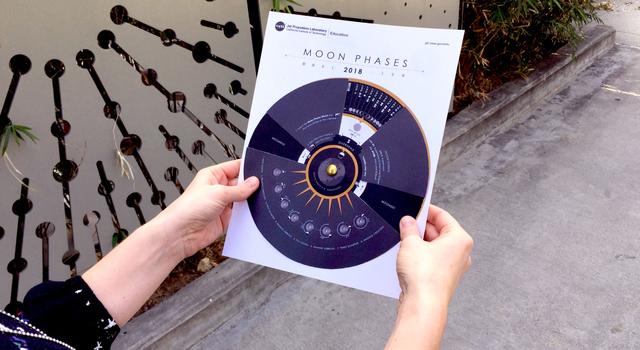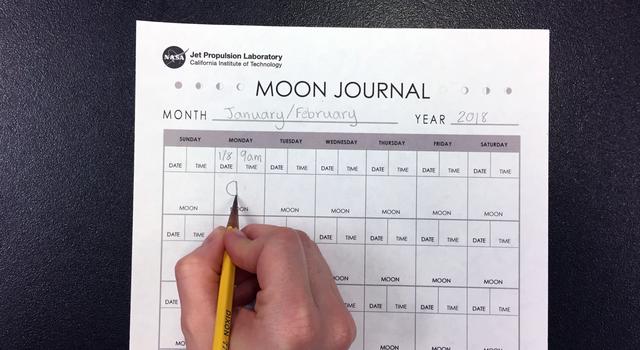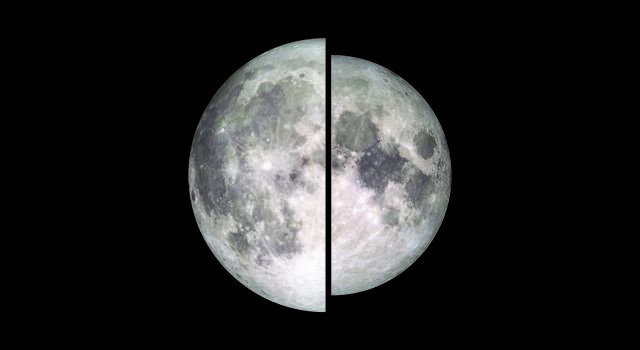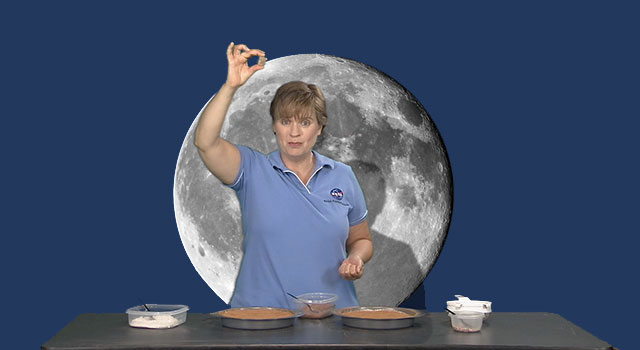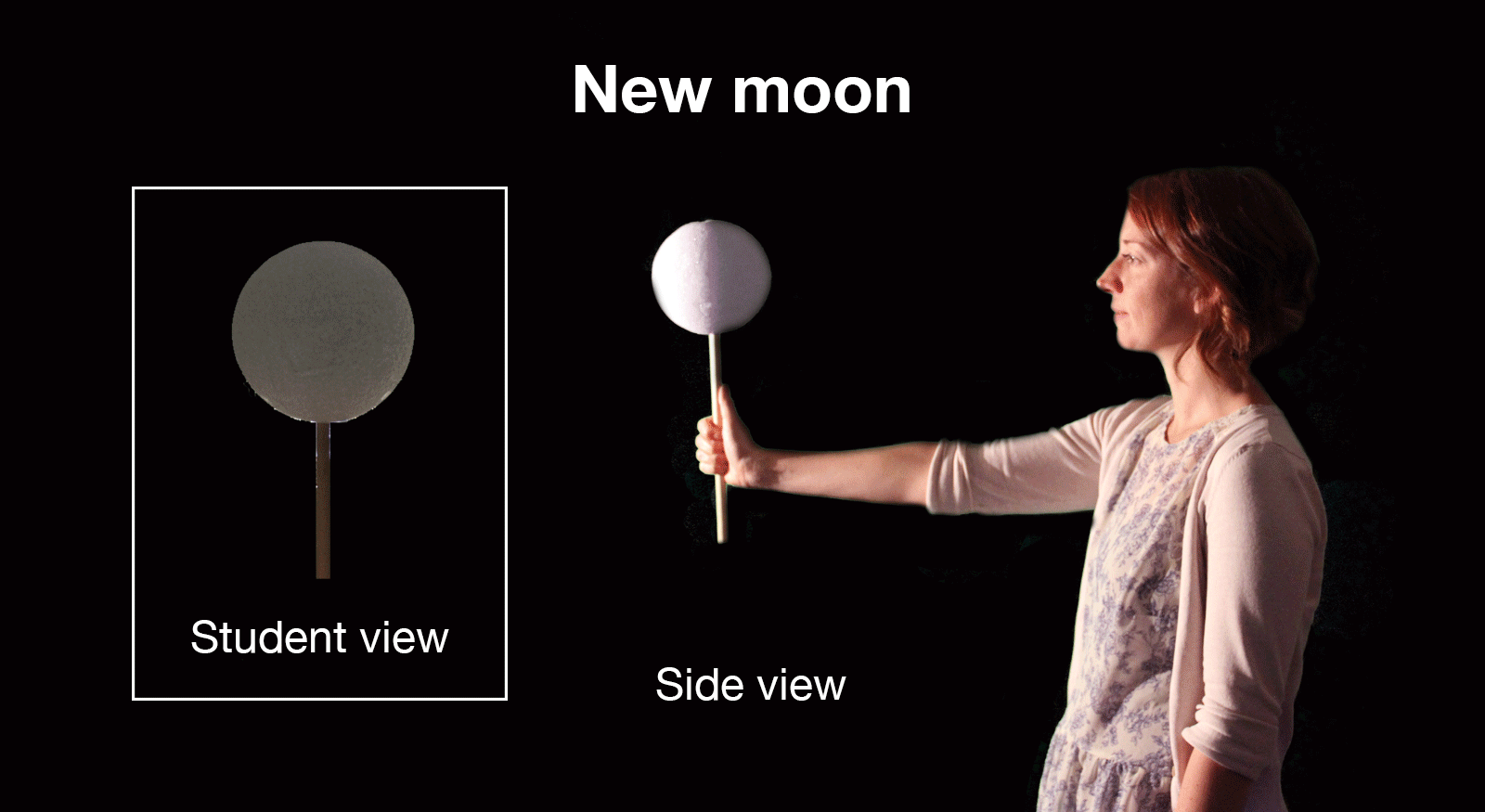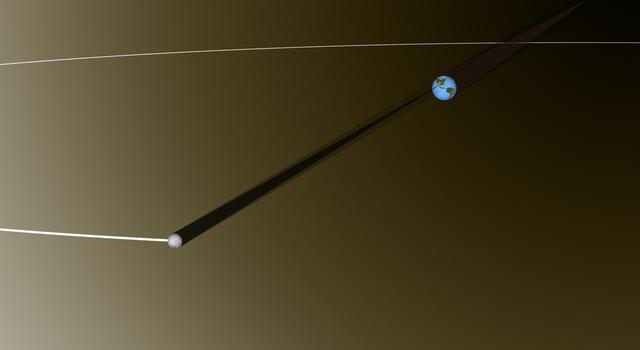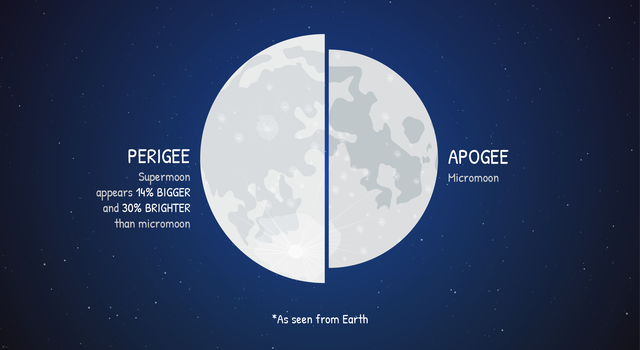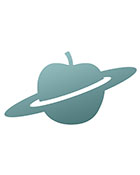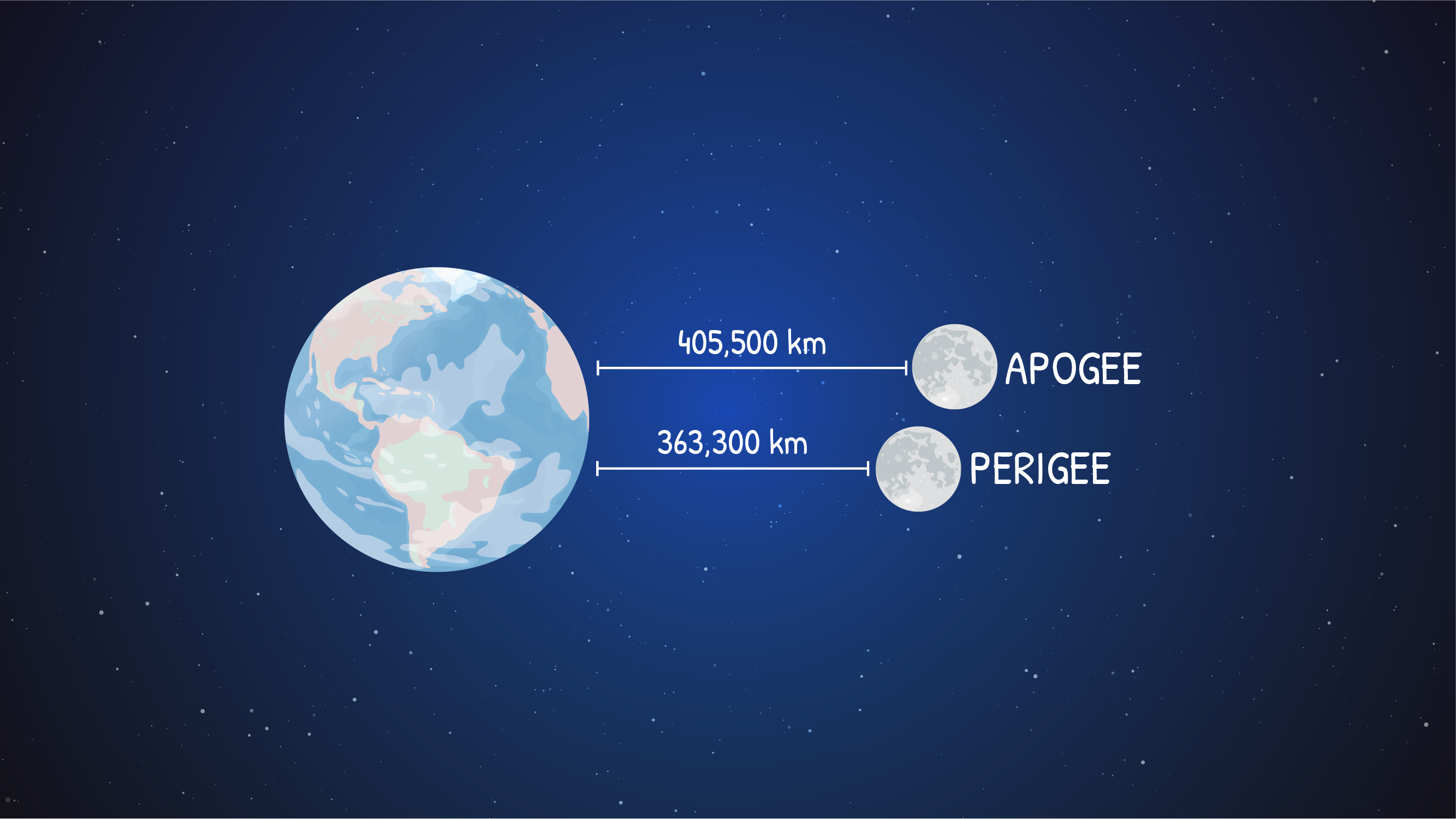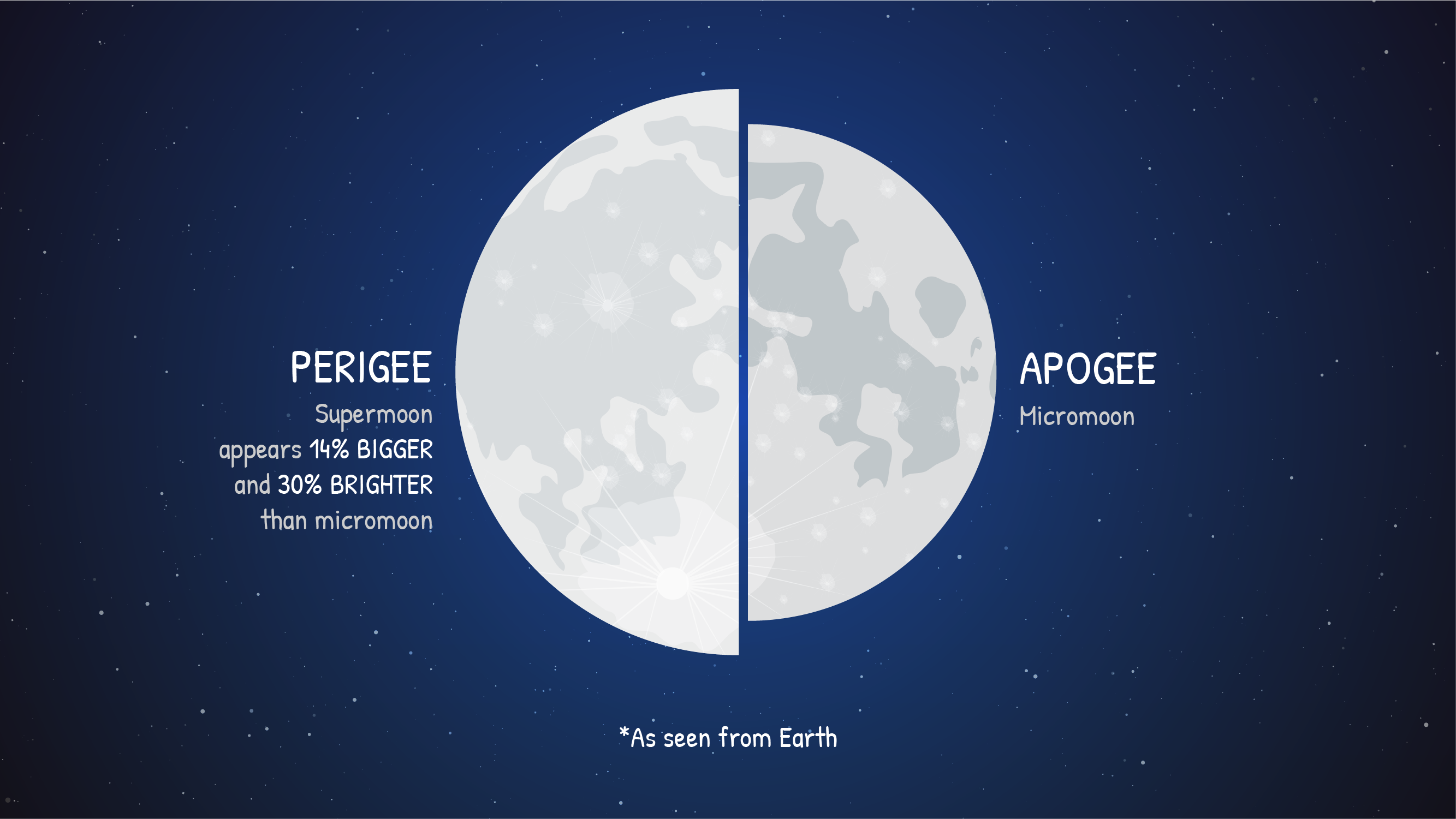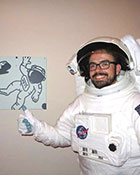Edu News | December 21, 2017
Make Your Own 2018 NASA Moon Phases Calendar
Looking for a stellar 2018 calendar? Try this new Moon Phases Calendar and Calculator DIY from the Education Office at NASA’s Jet Propulsion Laboratory!
Download the free, decoder-ring style calendar and assemble it to see when and where to view the Moon every day of the year. The calendar features daily moon phases, moonrise, moonset and overhead viewing times, a listing of Moon events including supermoons and lunar eclipses, plus graphics depicting the relative positions of Earth and the Moon during various moon phases. Use it to teach students about the phases of the Moon, for sky-gazing or simply as a unique wall calendar.
In the classroom, it makes a great addition to this Teachable Moment and related lessons about supermoons – two of which will ring in the new year in January 2018.
Explore these and more Moon-related lessons and activities from NASA/JPL Edu at the links below:
For Students
For Educators
Teachable Moments | November 15, 2017
What’s a Supermoon and Just How Super Is It?
The term “supermoon” has been popping up a lot in the news and on social media over the past few years. But what are supermoons, why do they occur and how can they be used as an educational tool. Plus, are they really that super?
How it Works
As the Moon orbits Earth, it goes through phases, which are determined by its position relative to Earth and the Sun. When the Moon lines up on the opposite side of Earth from the Sun, we see a full moon. The new moon phase occurs when the Moon and the Sun are lined up on the same side of Earth.
The Moon doesn’t orbit in a perfect circle. Instead, it travels in an ellipse that brings the Moon closer to and farther from Earth in its orbit. The farthest point in this ellipse is called the apogee and is about 405,500 kilometers from Earth on average. Its closest point is the perigee, which is an average distance of about 363,300 kilometers from Earth. During every 27-day orbit around Earth, the Moon reaches both its apogee and perigee.
Full moons can occur at any point along the Moon’s elliptical path, but when a full moon occurs at or near the perigee, it looks slightly larger and brighter than a typical full moon. That’s what the term “supermoon" refers to.
What makes a supermoon super? Watch this short animation to find out. Credit: NASA/JPL-Caltech
Because supermoon is not an official astronomical term, there is no definition about just how close to perigee the full moon has to be in order to be called “super." Generally, supermoon is used to refer to a full moon 90 percent or closer to perigee. (When the term supermoon was originally coined, it was also used to describe a new moon in the same position, but since the new moon isn’t easily visible from Earth, it’s rarely used in that context anymore.)
A more accurate and scientific term is “perigee syzygy.” Syzygy is the alignment of three celestial bodies, in this case the Sun, Moon and Earth. But that doesn’t quite roll off the tongue as easily as supermoon.
Why It’s Important
As the largest and brightest object in the night sky, the Moon is a popular focal point for many amateur and professional astronomers pointing their telescopes to the sky, and the source of inspiration for everyone from aspiring space scientists to engineers to artists.
The supermoon is a great opportunity for teachers to connect concepts being taught in the classroom to something students will undoubtedly be hearing about. Students can practice writing skills in a Moon journal, study Moon phases and apply their math skills to observing the supermoon. (Click here for related activities from JPL’s Education Office.)
Incorrect and misleading information about the Moon (and supermoons) can lead to confusion and frustration. It’s important to help students understand what to expect and be able to identify inaccurate info.
What to Expect
Size
As with anything that moves closer to the person viewing it, the supermoon will appear bigger than an average full moon. At its largest, it can appear 14% larger in diameter than the smallest full moon. Keep in mind that a 14% increase in the apparent size of something that can be covered with a fingernail on an outstretched arm won’t seem significantly bigger. Unlike side-by-side comparisons made in science and everyday life, students will not have seen the full moon for at least 30 days, and won’t see another for at least 30 more days. Comparing a supermoon with a typical full moon from memory is very difficult.
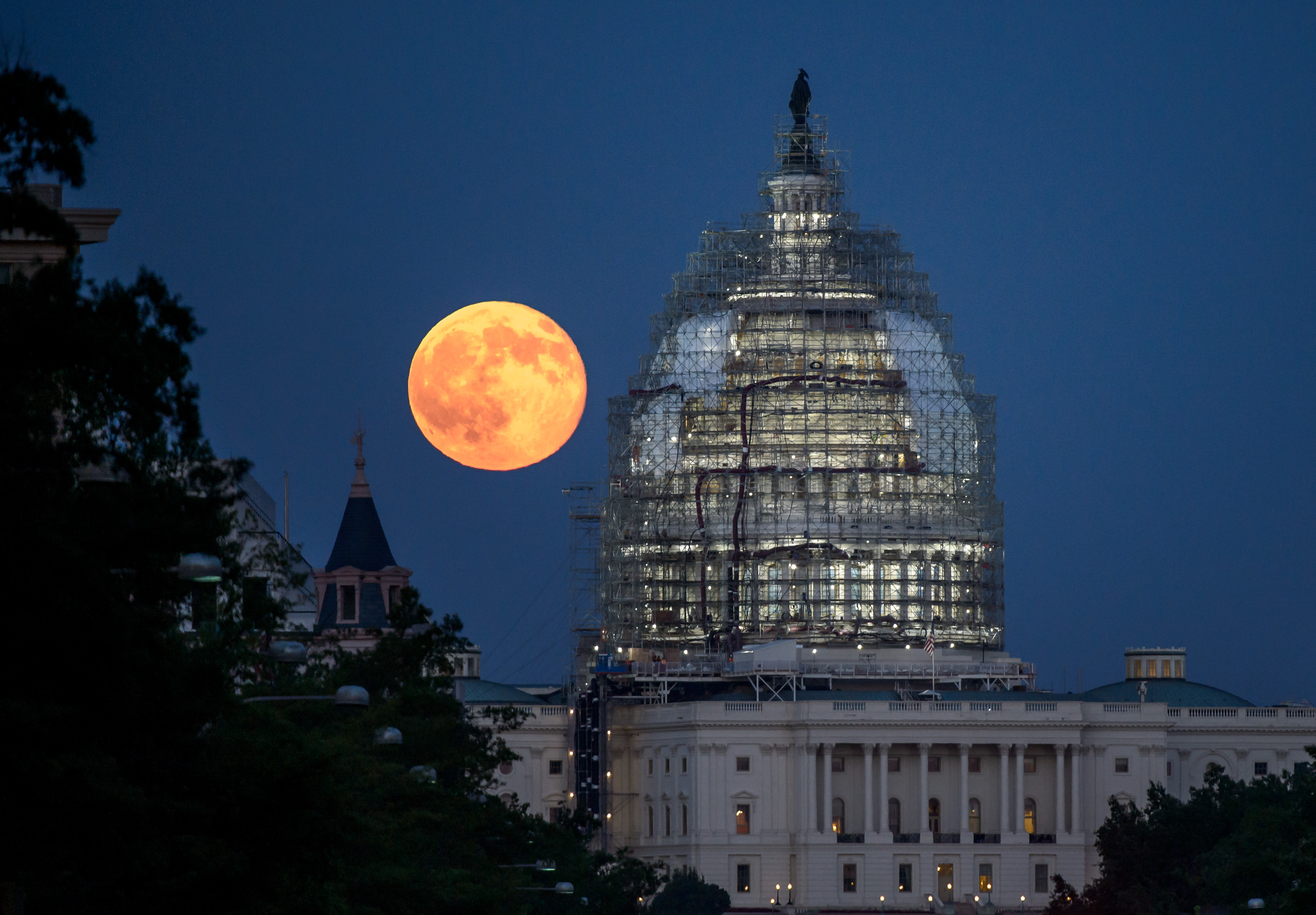
While they make for great photographs, images like this one that rely on a special photographic technique aren't an accurate representation of what the supermoon will look like to the naked eye. Credit: NASA/Bill Ingalls | Full image and caption on Flickr
Leading up to a supermoon, there are often misleading images on popular media. A technique that involves using a long telephoto lens to take photographs of the Moon next to buildings or other objects makes the Moon look huge compared with its surroundings. This effect can make for great photographs, but it has nothing to do with the supermoon. In fact, these photos can be taken during any Moon phase, but they will likely be used in stories promoting the supermoon.
There are also images that have been edited to inaccurately dramatize the size of the supermoon. Both of these can lead students, and adults, taking pictures with their cell phone to think that they’ve done something wrong or just aren’t cut out for observing the sky, which isn’t true!
Your students may have noticed that when they see a full moon low on the horizon, it appears huge and then seems to shrink as it rises into the night sky. This can happen during any full moon. Known as the Moon Illusion, it has nothing to do with a supermoon. In fact, scientists still aren’t sure what causes the Moon Illusion.
Brightness
The full moon is bright and the supermoon is even brighter! Sunlight reflecting off the Moon during its full phase is bright enough to cast shadows on the ground. During a supermoon, that brightness can increase up to 30 percent as a result of the Moon being closer to Earth, a phenomenon explained by the inverse square law. (Introduce students to the inverse square law with this space-related math lesson for 6th- through 8th-graders.) As with the size of the Moon, students may not remember just how bright the last full moon was or easily be able to compare it. Powerful city lights can also diminish how bright a supermoon seems. Viewing it away from bright overhead street lights or outside the city can help viewers appreciate the increase in brightness.
What Not to Expect
A supermoon will not cause extreme flooding, earthquakes, fires, volcanic eruptions, severe weather, nor tsunamis, despite what incorrect and non-scientific speculators might suggest. Encourage your students to be good scientists and research this for themselves.
Teach It
The excitement and buzz surrounding a supermoon is a great opportunity to teach a variety of Moon topics with these lessons from JPL’s Education Office:
- *NEW* Observing the Moon (Grades K-6) – Students identify the Moon’s location in the sky and record their observations over the course of the moon-phase cycle in a journal.
- *NEW* Measuring the Supermoon (Grades 5-12) – Students take measurements of the Moon during its full phase over multiple Moon cycles to compare and contrast results.
- *NEW* Moon Phases Calendar and Calculator – Like a decoder wheel for the Moon, this calendar will show you where and when to see the Moon and every moon phase throughout the year!
- *NEW* Look at the Moon! Journaling Project – Draw what you see in a Moon Journal and see if you can predict the moon phase that comes next.
- Moon Phases (Grades 1-6) – Students learn about the phases of the Moon by acting them out. In 30 minutes, they will act out one complete Moon cycle.
- Whip Up a Moon-Like Crater (Grades 1-6) – Whip up a Moon-like crater with baking ingredients as a demonstration for students.
- Modeling the Earth-Moon System (Grades 6-8) – Using an assortment of playground and toy balls, students will measure diameter, calculate distance and scale, and build a model of the Earth-Moon system.
Explore More
- Learn more about the Moon on NASA's Moon website.
- See where NASA is heading next on NASA's Moon to Mars website.
- Imagine a future in space with NASA's Moon to Mars posters.
For the record: This story originally stated a supermoon would be visible in January and February 2018. The two supermoons of 2018 are both in January.
TAGS: Supermoon, Moon Phases, Moon, Earth's Moon, What's Up, Astronomy, K-12, Educators




